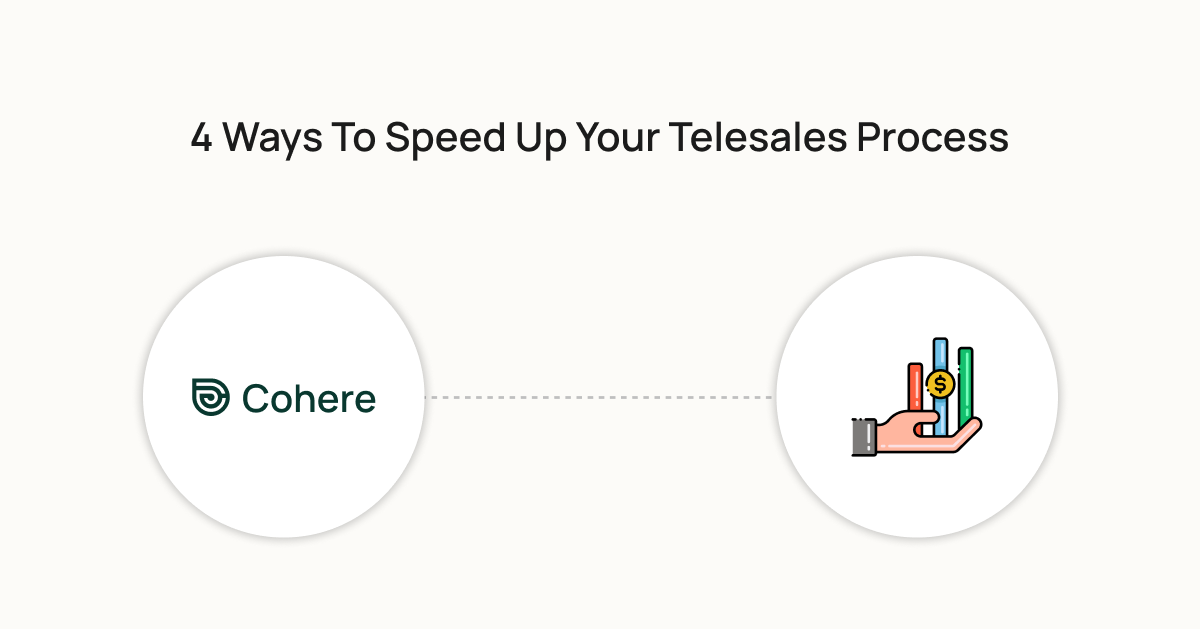
Support teams know that people expect brands to respond rapidly. According to research by Pega, 59% of customers surveyed agree that speedy resolution to issues or questions is one of the most critical roles of customer service.
The same expectation rings true in telesales. Based on Xant’s Definitive Guide to Sales Cadence study, sales reps do best when they respond to leads within five minutes. This speedy response makes reps 100x more likely to reach the lead and 21x more likely to qualify them.
Determination isn’t enough to speed up your sales process and engage more leads. Rushing can cause reps to make careless mistakes and deliver sloppy pitches. Instead, reps can adopt technology that empowers them to engage leads more effectively over the phone.
1. Score leads to focus on easy-to-close sales
Chasing down every lead without scoring is a recipe for disaster. Low-intent leads block the sales pipeline and overwhelm your sales team with contacts who may not be ready to talk. According to Ruler Analytics’ sales and marketing expert survey, almost half of respondents cited too many unqualified leads in the sales pipeline as a primary factor slowing down their sales cycle.
Use lead scoring to qualify leads and “rank” them in order of those most likely to make a sale to least likely. Reps can manually score leads or use CRM software integrations to automate scoring, giving themselves clear goals to work toward.
To score manually, think back to customers who were once high-quality leads. Are there any common factors they share — like demographics, behaviors on your website, or click-through rates from emails? Find what these leads had in common and use those factors to assign “points” to current leads. Check out this comprehensive guide to lead scoring for more details.
A good CRM software, like Salesforce or HubSpot, will have built-in features or integrations that automate the lead scoring process to give reps the fastest results.Look for customizable lead scoring solutions in CRMs, so reps can use valuable sales knowledge to create the most effective scoring system.
2. Embrace interactive voice response systems (but don’t lose your human touch)
Interactive voice response systems (IVRs) are automated business phone systems. These systems help callers via pre-recorded, interactive voice messages. Callers receive menu options to route their call or deliver helpful answers without speaking to an agent.
IVRs lighten your sales staff’s workload and help them to nurture leads quickly and automatically. Think of IVRs as receptionists that streamline call flows for reps, so a high volume of unnecessary calls doesn’t weigh them down.
When using IVRs, try to anticipate your caller’s needs to create an engaging experience. For example, use natural, human voice recordings and set the menu up with answers to frequently asked product questions and relevant sales announcements to help leads get quick answers without speaking to a rep.
Cloud contact center solutions like RingCentral have IVR included in their systems, so setup is fast and easy. Reps can customize IVRs with a simple drag-and-drop interface right from their web browsers.
If leads prefer to work with a live agent and request one, the IVR system can collect caller data and route leads to the best sales rep based on their responses to a pre-recorded menu of options. Proper routing and data collection reduce call handling time and frustrating transfers and help resolve sales questions on the first phone call.
To learn more, check out Dialpad’s IVR article for details about what IVRs do and how to set them up.
3. Offer cobrowsing to guide leads in real time
Have you ever been stuck explaining to a potential customer something that would work better as a visual demonstration?
Visual demos are often necessary for sales, but the back and forth of setting up meeting invites or ironing out issues with screen sharing software creates annoying delays.
Cohere offers a no-setup-needed cobrowsing solution to help reps provide visual guidance on the spot.
Cobrowsing means reps and leads can jointly navigate a single browsing session, which pairs perfectly with sales calls. Reps simply request permission to access the lead’s browser and take it from there.
Because agents can give leads a compelling visual experience while talking, leads leave the conversation with more clarity and retain more information. Pair telesales with cobrowsing to cut down on confusing explanations and reduce call handling time.
4. Focus on follow-ups
Follow-ups are often the move that wins a deal, but they can be tricky for sales teams to create and send. A Ruler Analytics survey found that almost a third of respondents felt that lack of efficient follow-up was a primary factor affecting the sales cycle length.
Don’t wait for leads to get in touch: Schedule your telesales follow-ups right away to keep leads interested and close the sale faster.
According to the Xant 2021 Sales Development Study, 81% of sellers make five or fewer follow-ups. But data shows that salespeople can get 15% more connections by aiming for seven or more attempts.
While you can manually send follow-ups to leads, we recommend using automation tools to engage with leads who are still early in the sales funnel. With automation handling this communication, sales reps can dedicate more energy to prospects who are ready to buy.
So how can reps automate follow-ups?
CRM software like HubSpot allows reps to queue up a series of automated follow-up emails — like post-call follow-ups or meeting invites. These messages are automatically sent based on pre-defined schedules or triggers. CRMs also allow agents to personalize these messages, so leads never feel like they’re reading another boring, canned email.
IVR systems are another excellent resource for automating follow-ups. For example, some IVR systems (like Continental Message) can automatically notify leads of events like scheduled meetings or send targeted messages to prompt leads to speak with reps.
Create a sales strategy that works smarter, not harder
It may feel like closing sales faster is always better. After all, quick sales cycles can come with many perks — high sales volumes, less time for competitors to win over potential customers, and so on.
While speedy sales are ideal, they should never be at the expense of your lead’s overall experience. Pair these time-saving best practices with a solid telesales strategy to consistently close deals.
By forming clear processes and criteria around high-quality lead nurturing, reps can work efficiently without compromising the sales experience.
